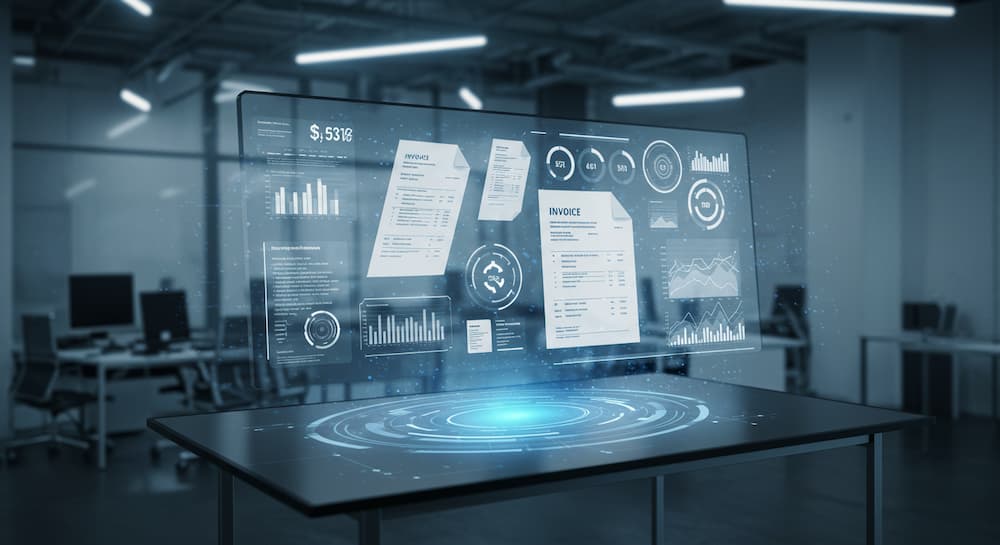Enterprises handle thousands of invoices each month. Efficient invoice processing ensures accurate payments, clear audits, and strong supplier relationships. By leveraging modern digital transformation solutions, companies can automate manual tasks, reduce errors, and accelerate cash flow. Whether you’re exploring digital transformation providers or benchmarking companies with digital transformation success, understanding today’s tools and practices is vital for staying competitive.
“Enterprise invoice processing isn’t just about tech—it’s about rethinking workflows end to end,” says Tamer Badr, owner of Singleclic. “When you automate with purpose, you free your team to focus on strategy, not data entry.”
What Is Enterprise Invoice Processing?
Enterprise invoice processing covers the capture, validation, approval, and payment of vendor invoices across multiple departments and geographies. A modern system typically includes:
- Optical Character Recognition (OCR): Extracts data from paper or PDF invoices.
- Workflow Automation: Routes invoices for approvals based on rules (e.g., amount, department).
- ERP Integration: Syncs with finance and procurement systems to post transactions and update ledgers.
- Analytics & Reporting: Provides visibility into invoice statuses, processing times, and bottlenecks.
Companies embracing these digital transformation solutions see faster invoice cycles, lower processing costs, and greater compliance.
People Are Always Asking
- “Which solution scales best for a global enterprise?”
Answer: Look for cloud-native platforms with multi-currency support and localized tax engines. - “Can OCR handle poor-quality scans?”
Answer: Leading OCR engines boast 90–95% accuracy, but image pre-cleanup and human review remain important. - “How long before we see ROI?”
Answer: Organizations often recover costs within 6–12 months through labor savings and early-payment discounts. - “What change management is needed?”
Answer: Combine training, executive sponsorship, and a phased rollout to drive user adoption. - “Are there security risks?”
Answer: Ensure SOC 2 compliance, data encryption, and role-based access controls to safeguard sensitive financial data.
Top 7 Enterprise Invoice Processing Solutions
Below are leading platforms that automate high-volume invoice workflows. Each offers unique strengths and trade-offs:
- SAP Ariba
- Features: End-to-end procurement and AP automation, supplier network integration.
- Pros: Deep ERP integration; robust compliance controls.
- Cons: Lengthy implementation; premium pricing.
- Oracle NetSuite OneWorld
- Features: Global financial consolidation, multi-book accounting, AP automation.
- Pros: Unified global ledger; strong support for subsidiaries.
- Cons: Customization often needs technical resources.
- Coupa
- Features: Source-to-pay suite, dynamic discounting, real-time spend analytics.
- Pros: User-friendly interface; rapid deployment options.
- Cons: Advanced analytics require higher-tier plans.
- Tipalti
- Features: Mass payments, supplier onboarding, tax compliance.
- Pros: Ideal for high-volume payables; global payment rails.
- Cons: Primarily focused on payables; may need ERP integration for full GL posting.
- Stampli
- Features: Collaborative invoice review, AI-driven data capture, audit trail.
- Pros: Intuitive comments-based workflow; quick learning curve.
- Cons: Limited broader procurement features.
- Basware
- Features: Networked purchase-to-pay, e-invoicing, transaction financing.
- Pros: Strong e-invoicing network coverage.
- Cons: Implementation can be complex for smaller teams.
- AvidXchange
- Features: End-to-end AP automation, virtual card payments, supplier enablement.
- Pros: Excellent supplier adoption programs.
- Cons: Less suited for non-US markets.
These platforms reflect the diversity of companies with digital transformation success, from multinational conglomerates to fast-growing global businesses.
Best Practices for Enterprise Invoice Processing
Adopt these strategies to maximize automation benefits:
- Standardize Invoice Formats
- Enforce supplier guidelines for e-invoices or standardized PDF templates.
- Implement Intelligent OCR
- Combine machine learning models and human QA to boost data accuracy above 95%.
- Design Clear Approval Workflows
- Map processes with business rules—by amount, department, or project—to minimize manual routing.
- Monitor KPIs Continuously
- Track cycle time, exception rate, and cost per invoice to identify improvement areas.
- Integrate Early-Payment Programs
- Leverage dynamic discounting within your AP platform to improve cash flow and supplier relations.
- Ensure Tight Security
- Use encryption, multi-factor authentication, and regular audits to protect financial data.
Tamer Badr adds, “AP automation isn’t a one-off project. Continuous monitoring and process refinement drive ongoing efficiency gains.”
Real-World Reviews
Maria, CFO at a Manufacturing Enterprise
“We implemented SAP Ariba and saw invoice processing times drop by 60%. The supplier network integration was invaluable, though initial training took months.”
Jake, VP Finance at a Tech Company
“Tipalti handled our 10,000 monthly invoices seamlessly. Global payments and tax compliance are a breeze. We did need to build custom connectors for our ERP.”
Linda, Controller at a Retail Chain
“Stampli’s collaborative review interface cut invoice exceptions by half. Our AP team loves the chat-like annotation, but it lacks full procurement features.”
Potential Drawbacks of Automation Services
- Implementation Complexity
- End-to-end solutions often require months of configuration and testing, straining IT resources.
- High Upfront Costs
- License fees, consulting, and training can be significant before realizing ROI.
- Change Management Challenges
- Users may revert to manual processes without strong governance and support.
- Integration Hurdles
- Legacy ERPs and custom interfaces can complicate data mapping and real-time syncing.
- Vendor Lock-In
- Proprietary platforms may make future migrations difficult or costly.
Tip: Pilot automation in a single business unit to refine processes before a full-scale rollout.
Enhance Your Invoice Processing with Singleclic
Singleclic offers tailored digital transformation solutions to optimize enterprise AP:
- Process Assessment: Identify automation opportunities and ROI potential.
- Implementation Services: Configure platforms, integrate ERP, and deploy OCR.
- Change Management: Train users, establish governance, and monitor adoption.
- Ongoing Support: Tune workflows, manage updates, and deliver performance dashboards.
“Our clients cut AP costs by up to 40% within the first year,” says Tamer Badr. “We focus on fast deployment and sustained process improvement.”
Frequently Asked Questions (FAQ)
- What’s the difference between invoice capture and full AP automation?
- Answer: Capture extracts data; full automation handles routing, approvals, payments, and reconciliation.
- How do we handle exceptions?
- Answer: Use AI-powered validation rules and human workflows for out-of-tolerance invoices.
- Can we onboard suppliers quickly?
- Answer: Leading platforms offer self-service portals to register and submit compliant invoices.
- What’s the ideal invoice processing cycle time?
- Answer: Top performers close within 3–5 days from receipt to payment.
- How do we measure success?
- Answer: Track cost per invoice, cycle time, exception rate, and user satisfaction surveys.
- Answer: Track cost per invoice, cycle time, exception rate, and user satisfaction surveys.
Effective invoice processing for enterprise demands the right blend of technology, strategy, and culture. By adopting proven digital transformation solutions, partnering with experienced digital transformation providers, and following best practices, organizations can transform AP from a cost center into a strategic advantage. Start your automation journey today, and watch efficiency, accuracy, and supplier satisfaction soar.










